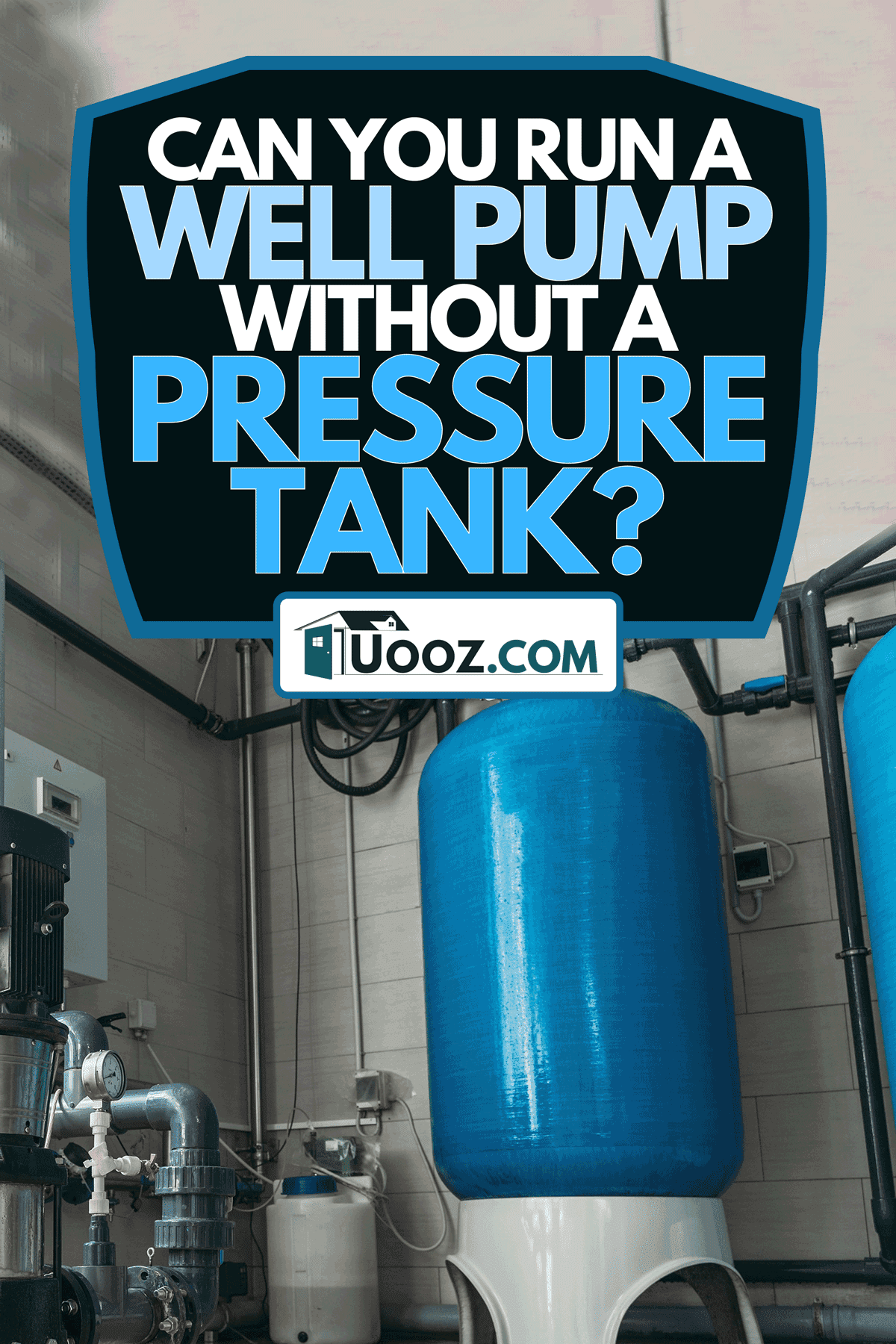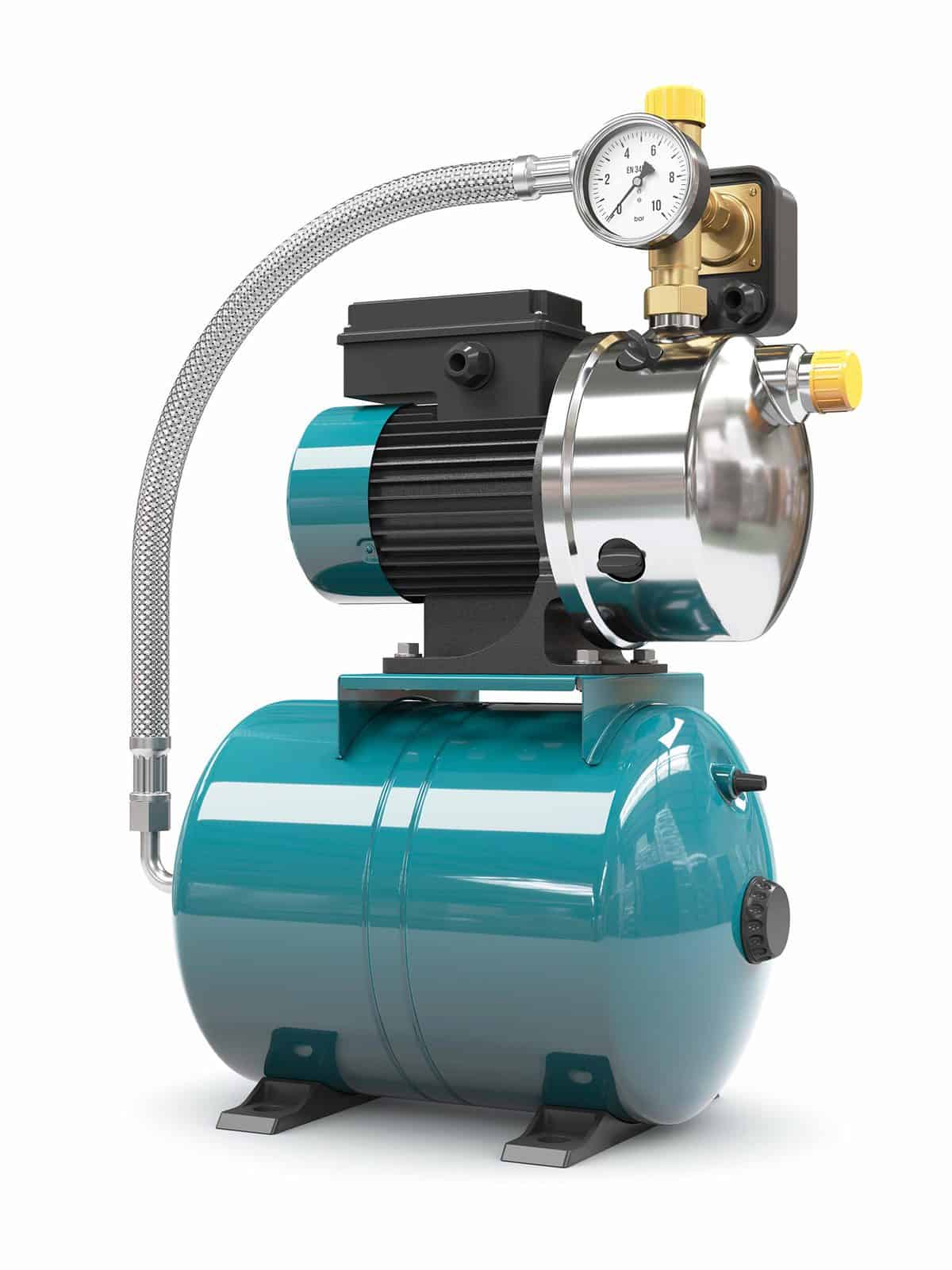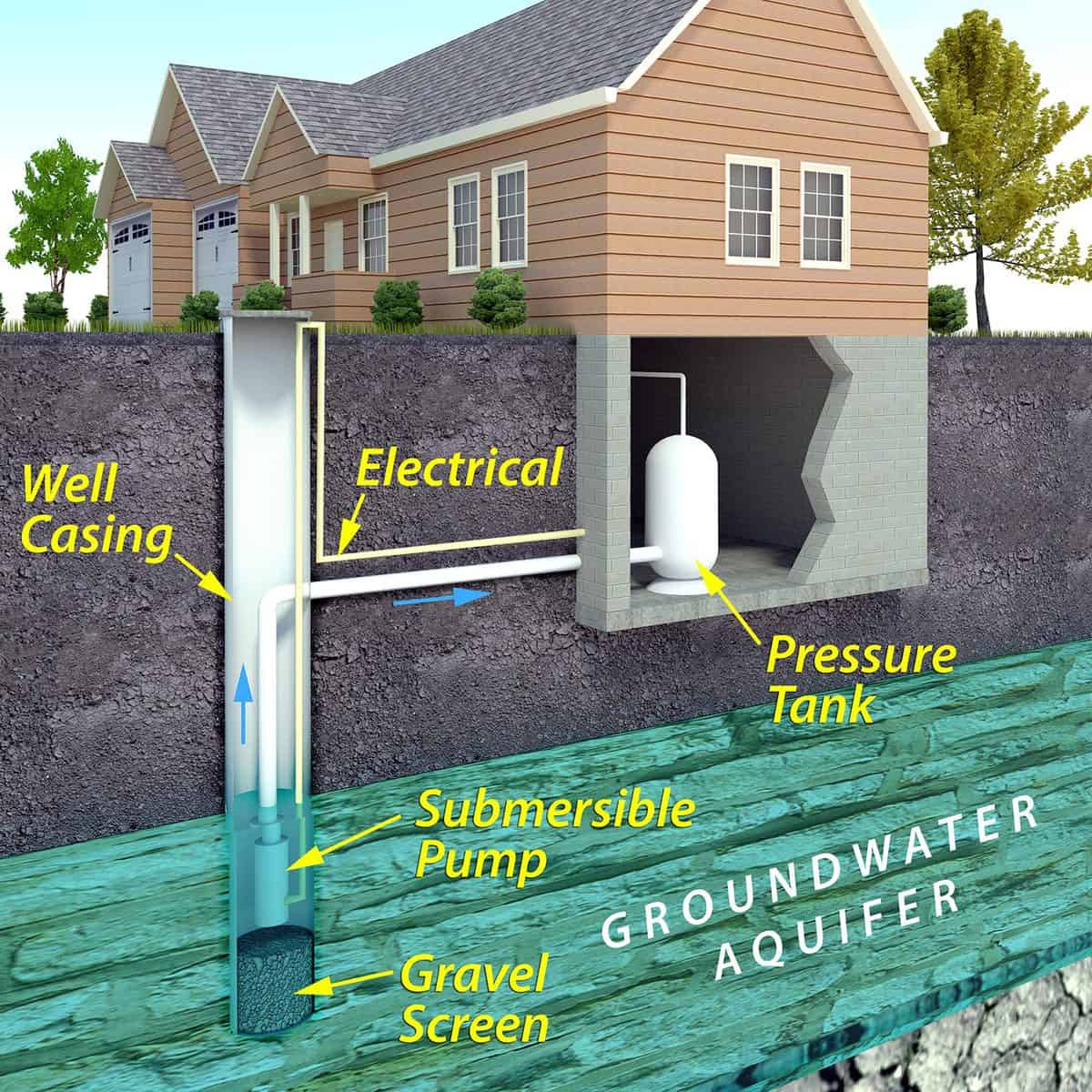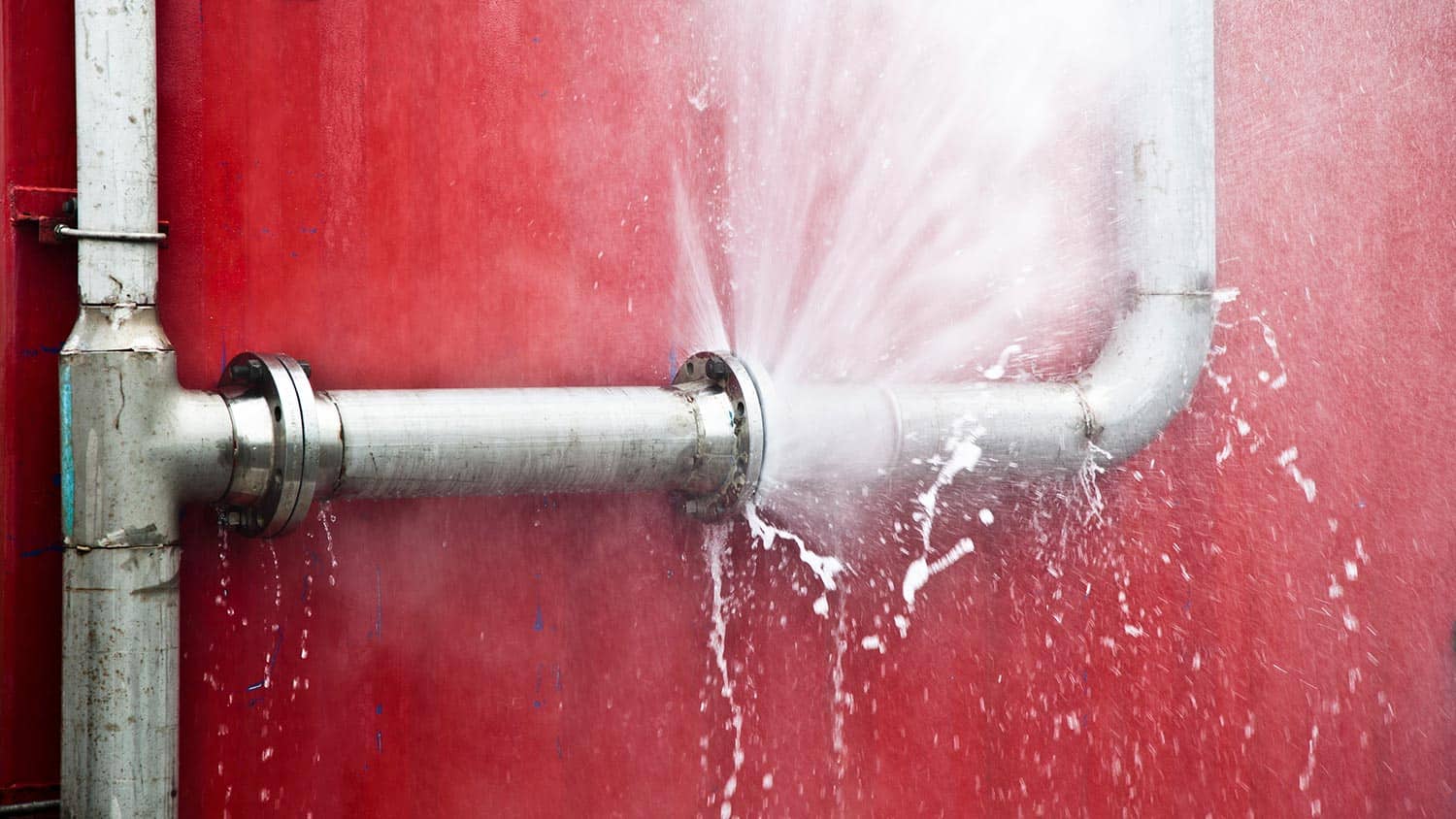Do you own a home with a private well? Having a well can bring up many questions like; what if my well pump doesn't have a pressure tank? Knowing the ins and outs of your well and the equipment attached to it can keep your pump in good shape for many years to come. Today, we are going to lay out our research and answer if you can run a well pump without a pressure tank and what that might look like.
You can run a well pump with a pressure tank. The purpose of a pressure tank is to keep the water pressure at a constant level. Without the pressure tank, your well pump needs to work harder and can go into a cycling state where it turns on and off quickly and constantly.
While well pumps can run without a pressure tank, there are some situations where it is recommended you have one. Keep reading as we break down when you should use a pressure tank, and answer how long it would take for a well pump to build pressure.

Running A Well Pump Without A Pressure Tank
There are specific circumstances that running a well pump without a pressure tank is acceptable. If you are using the water from the well for the ground or another surface where water pressure won't be an issue, there is no need for a pressure tank.
Additionally, if you don't have a pressure tank, you will need a relief valve on your well pump. A relief valve will stop flow back from going into the well, contaminating your source.
If you are running a well pump without a pressure tank, there are some drawbacks. Without a pressure tank, your well pump will constantly be running or switching on and off. This can cause a well pump to overheat, burn out, or at the very least, shorten your pump's lifespan. To avoid burning out your pump, you can switch it off when you are not using water.
When Should You Use A Pressure Tank?
In most cases, a well pump will be found with a pressure tank. The role of the pressure tank is to store water from the well, and then supply it to your house at the appropriate pressure using compressed air. A benefit of using a pressure tank is that it gives you instant access to water. A well pump on its own typically needs to be turned on manually to allow water flow.

If your well feeds water to your house, you should use a pressure tank. Showering and using the faucet can cause constant stress on a well pump that does not have a pressure tank. A pump that has to continuously work hard will burn out and fail at an inconvenient time.
You should use a pressure tank if you are looking for smooth water flow. Additionally, these tanks will extend the life of your well pump, save you electricity costs and decrease your energy use.
Read more on our blog post, "How Long Does It Take To Replace A Well Pump?"
What Size Pressure Tank Does My Well Pump Need?
When sizing a pressure tank, you will need to collect specific information. You will need to know the following before you begin:
- The flow rate of your well pump, or how many gallons per minute your pump produces
- Pressure switch settings for well pump
- Expected or target run time
There are general rules you can follow to make the sizing process more simple. For example, a run time of less than one minute is recommended for horsepower that is less than 1HP. Are you working with over 1HP? Then you can expect a run time of two or more minutes.
Luckily, most manufacturers can provide a pressure tank sizing chart. These charts allow you to determine the pressure settings and associated drawdown quickly.
It is not necessarily better to have a larger pressure tank. The size of the pressure tank needs to correlate with your pump's size and capabilities, or you will run the risk of overworking your pump or affecting your water pressure.
Where Should A Well Pressure Tank Be Located?
Where a well pressure tank is located depends on the set-up of your home. If you have moved into a house with a pressure tank already installed, you may find that it is outside, under the house, or in another location entirely. In some cases, the pressure tank will be attached to the well pump itself.
In the image below, you can see the pressure tank is located under the house.

Pressure tanks differ in size, and this characteristic may define where you place the tank. On top of physical location, think about where in your water system a tank gets installed. The pressure tank is after the well pump but before a water heater. Having the pressure tank as close to the use lines as comfortable and with the least amount of elevation is beneficial.
How Long Does It Take For A Well Pump To Build Pressure?
The size of your well pump affects how long it will take to build pressure. Additionally, varying amounts of sediment and pipe size can affect the timing. On average, it takes a well pump 45 seconds to 2 minutes to build pressure.
Is your pump taking much longer than this time frame to build pressure? There are a couple of reasons why your pump can be slow to build pressure or seems not to build pressure at all. One reason is a build-up of sediment within the pump. This build-up can cause clogs or impact the efficiency of the pump itself.
There is the risk of other debris blocking pipes, impellers, or novels on the pump as well. Additionally, your pipes may have a hole or a leak at one or multiple parts in the system.

If all pipes and your pump appear clear, you may have an issue with air being in your well pump. Pressure tanks used compressed air, but air in the well pump can cause issues. One of these issues is no water pressure.
Learn more on our blog post, "Does A Well Pump Affect Water Pressure?"
Can You Hook Up A Garden Hose To A Well Pump?
Do you have a garden that you need to water, or perhaps a small pool to fill? You can hook up a garden hose to a well pump to get these jobs done. There are attachments on both submersible pumps and pumps above ground for hoses. You can add a valve to the hose itself for ease of turning on and off the water.
Running a garden hose all day can cause stress to the pump. Running the hose in intervals over 2 hours per day is the recommended use for a garden hose attached to a well pump.
When attaching your hose, ensure all connections are tight and secure to avoid leaks and loss of water pressure. The use of hose adapters can be helpful for securing tight connections between hose and pump.
Amazon offers garden hose connectors with an on/off valve here.
In closing
You can run a well pump without a pressure tank, but it most cases, this is not ideal. You should use a pressure tank if you are using a well pump to cater to the water needs of your home. For example, running the shower or faucets on a daily basis requires a pressure tank. This amount of water use, without a pressure tank, puts stress on your well pump.
Your pump will need to turn on and off constantly or may run continuously, causing it to burn out. Using a pressure tank gives you constant pressure while elongating the life of your well pump and saving you costs on electricity and energy use. We hope you found this article insightful when it comes to the relationship between your well pump and pressure tank.
Are you looking for more information on caring for your well pump? Have a look through our blog post, "Should I Cover My Well Pump?"

